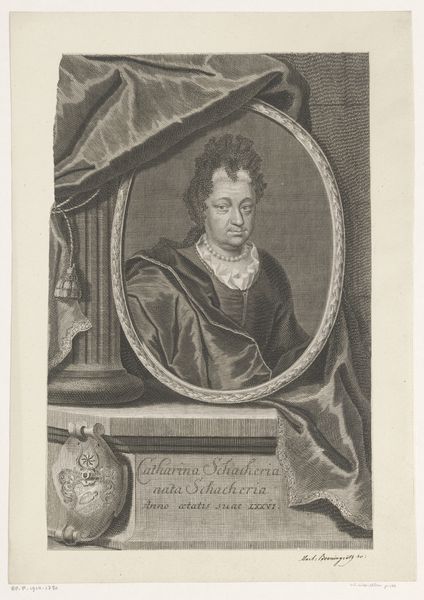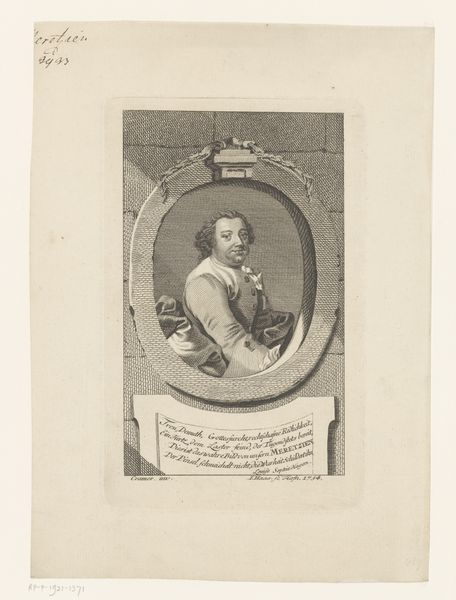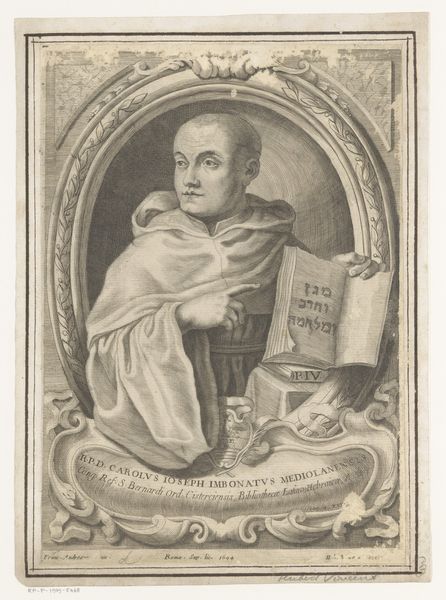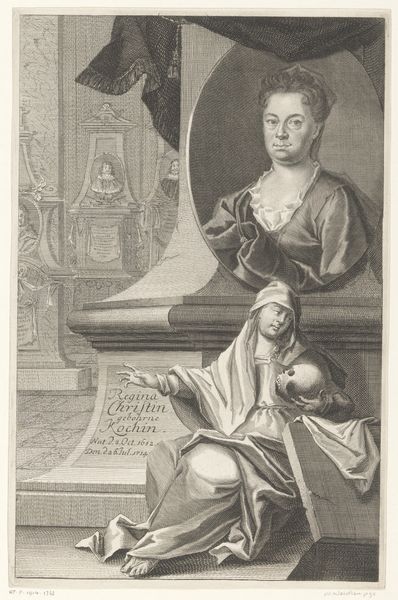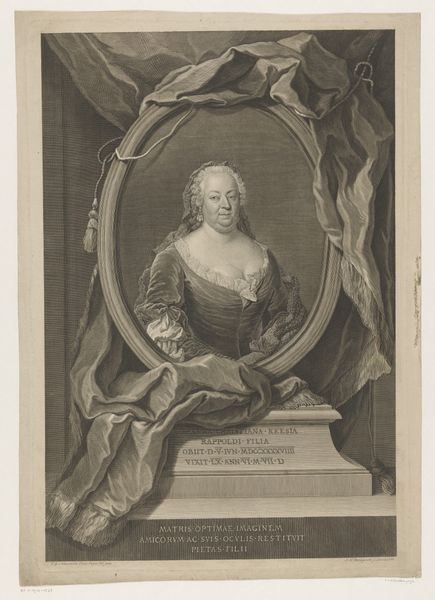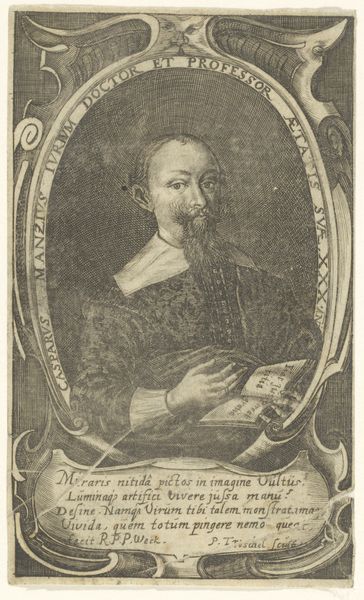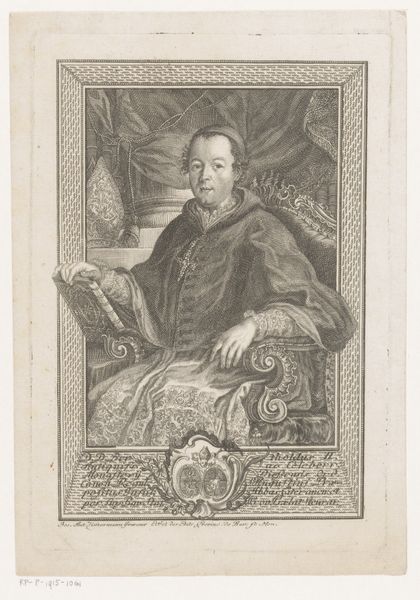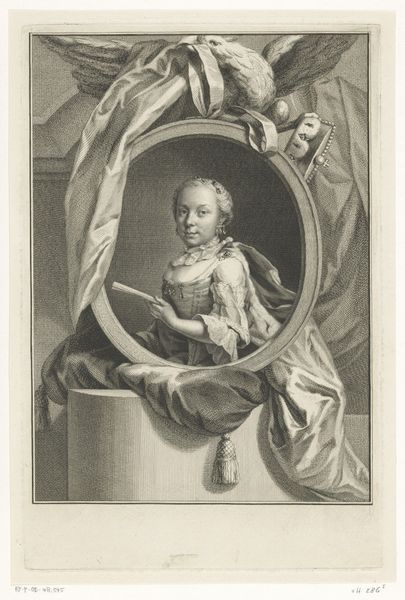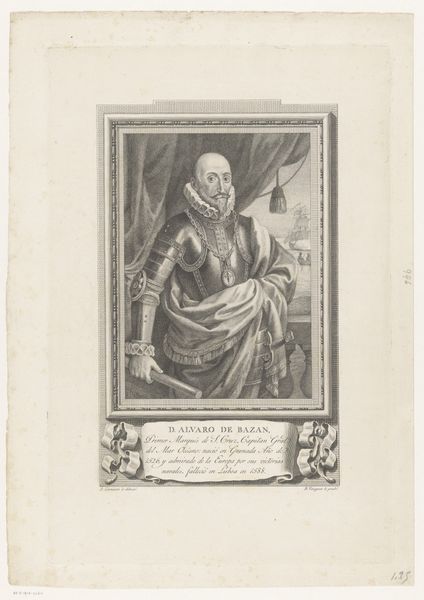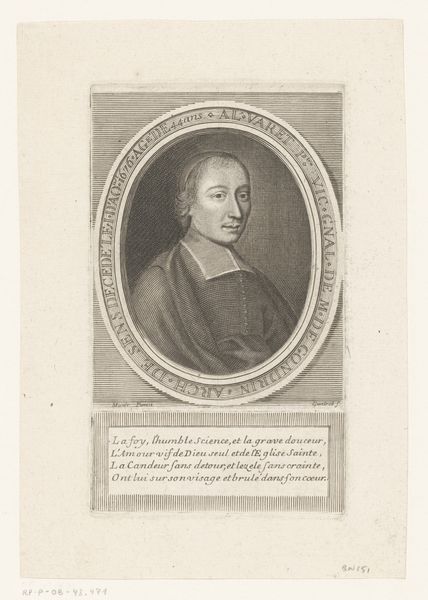
drawing, engraving
#
portrait
#
drawing
#
baroque
#
old engraving style
#
engraving
Dimensions: height 352 mm, width 239 mm
Copyright: Rijks Museum: Open Domain
This portrait of Christoph Johann Friedrich Kupezky was made by Bernhard Vogel sometime before 1737, using an engraving technique. This printmaking method involves meticulous work, cutting lines into a metal plate, inking it, and then transferring the image to paper under immense pressure. Look closely, and you can appreciate the sheer labor involved in creating the fine lines that define form and texture. The engraver needs to possess not only artistic skill but also a deep understanding of the materials and processes involved, from selecting the right tools to controlling the depth and angle of each cut. Prints like this one were part of a burgeoning industry, satisfying a growing demand for affordable images. The production of prints allowed for a wider dissemination of knowledge and imagery, contributing to the development of a visual culture that extended beyond the elite. So, next time you encounter a print, remember that it embodies a fusion of art, craft, and commerce. It is also a testament to the skill and labor of the artisans who brought these images to life, one careful line at a time.
Comments
No comments
Be the first to comment and join the conversation on the ultimate creative platform.
